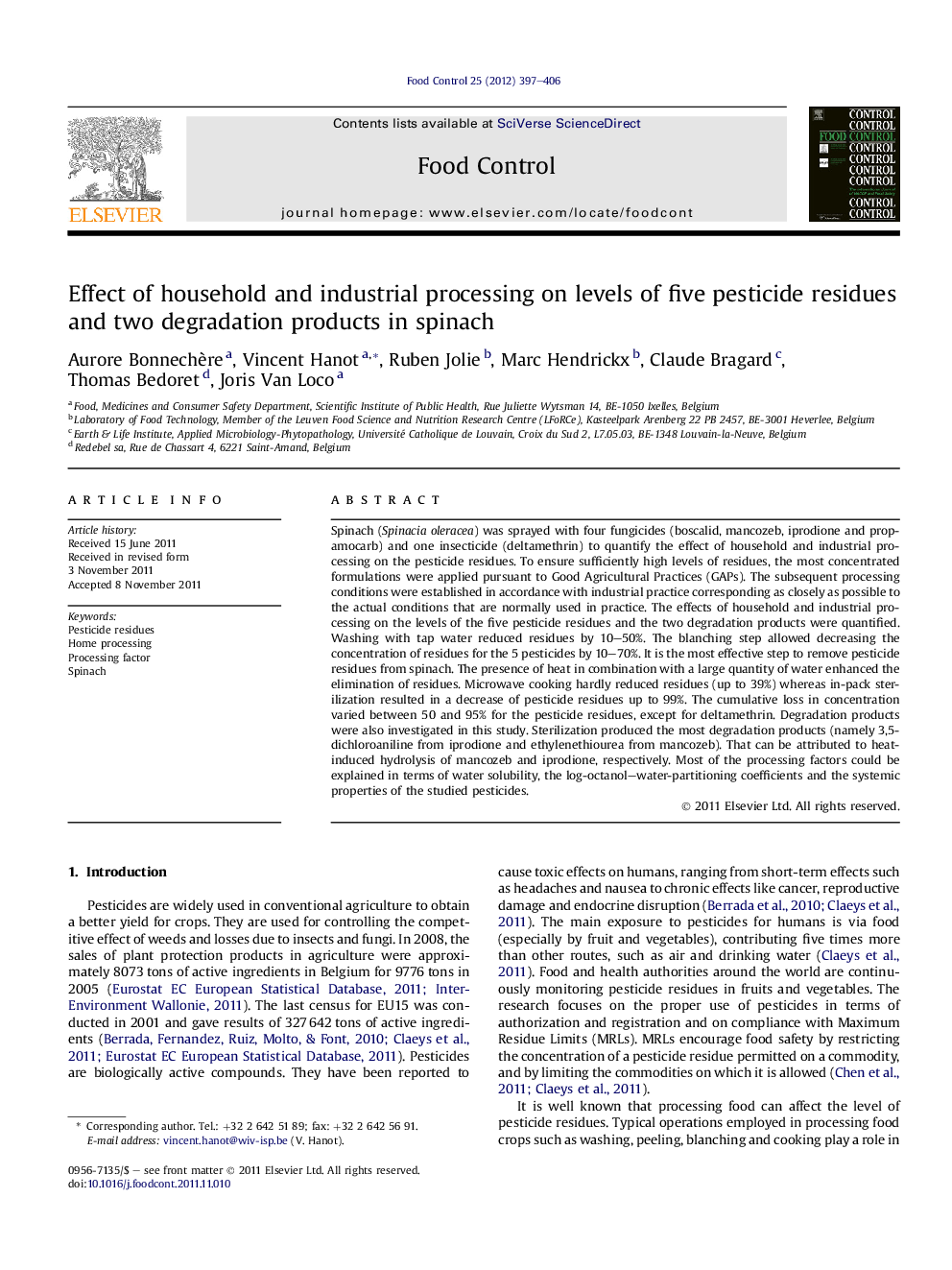| کد مقاله | کد نشریه | سال انتشار | مقاله انگلیسی | نسخه تمام متن |
|---|---|---|---|---|
| 6394165 | 1330460 | 2012 | 10 صفحه PDF | دانلود رایگان |

Spinach (Spinacia oleracea) was sprayed with four fungicides (boscalid, mancozeb, iprodione and propamocarb) and one insecticide (deltamethrin) to quantify the effect of household and industrial processing on the pesticide residues. To ensure sufficiently high levels of residues, the most concentrated formulations were applied pursuant to Good Agricultural Practices (GAPs). The subsequent processing conditions were established in accordance with industrial practice corresponding as closely as possible to the actual conditions that are normally used in practice. The effects of household and industrial processing on the levels of the five pesticide residues and the two degradation products were quantified. Washing with tap water reduced residues by 10-50%. The blanching step allowed decreasing the concentration of residues for the 5 pesticides by 10-70%. It is the most effective step to remove pesticide residues from spinach. The presence of heat in combination with a large quantity of water enhanced the elimination of residues. Microwave cooking hardly reduced residues (up to 39%) whereas in-pack sterilization resulted in a decrease of pesticide residues up to 99%. The cumulative loss in concentration varied between 50 and 95% for the pesticide residues, except for deltamethrin. Degradation products were also investigated in this study. Sterilization produced the most degradation products (namely 3,5-dichloroaniline from iprodione and ethylenethiourea from mancozeb). That can be attributed to heat-induced hydrolysis of mancozeb and iprodione, respectively. Most of the processing factors could be explained in terms of water solubility, the log-octanol-water-partitioning coefficients and the systemic properties of the studied pesticides.
⺠Processing factors for six pesticide residues in spinach. ⺠Formation of degradation products during processing. ⺠Processing studied: washing, blanching, microwaves cooking and sterilization. ⺠Good reduction of pesticides residues with processing except for deltamethrin. ⺠Processing factors correlated to physico-chemical properties of pesticides.
Journal: Food Control - Volume 25, Issue 1, May 2012, Pages 397-406